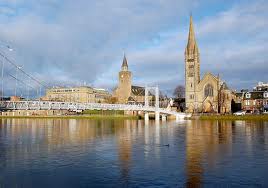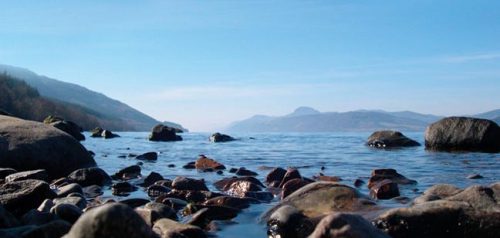An Invergordon Tour to Loch Ness, Culloden Battlefield & Cawdor Castle, plus a great selection of other places of interest. Leaving the Port of Invergordon you will travel south through several villages and towns, farming land and majestic country side with views along the Cromarty Firth and across to a peninsula known as the Black Isle. Maybe seeing some seals on the way! Your first main stop will be the village of Beauly.

Beauly originates back to the early 13th century when the Priory was first built. Although now a ruin an elm tree stands at the entrance to the grave yard which at 800 years old is thought to the oldest elm tree in europe. The village gets is name from Mary Queen of Scots who exclaimed ‘C’est un beau lieu’ french for what a beautiful place. This was her reaction upon staying in Beauly in the 16th century. You will now continue along the edge of the Beauly Firth to Inverness, the Highland capital.

Inverness has been one of the fastest growing cities in Europe in recent years. A wide range of great facilities and entertainment combined with a beautiful natural landscape result in a high quality of life. In Inverness you will see the canal, leisure facilities, theatre, cathedral, castle and the River Ness which runs through the heart of the city. Now travelling south west out of the city you will make your way towards the village of Dores which sits on the banks of Loch Ness. From here you will get fantastic views looking down the length of the loch.

Loch Ness, famous for being the home of Nessie sits on the Great Glen Fault. Loch Ness is 22.6 miles long, 2.7 miles across and has the largest water volume of any Scottish Loch. Its surface is 15.8 metres above sea level and is home to many species of fish. Here at Dores you will get a fantastic view of the loch, enjoy walking along the stone beach and will see what we believe to be the best possible view from the top of Dores hill. Now travelling eastward through Inverness you will shortly arrive at Culloden Battlefield.

Culloden Battlefield has been restored as close as possible to how it was when battle took place in April 1746. In just one hour over 1,200 died in a fierce and bloody battle, which was the last fought on British soil. Find out about the events before, during and after the battle. Walk round the battlefield learning about the armies tactics and how the battle played out. After surviving the battle you head a mile down the road to Clava Cairns.

The Clava Cairns are a fascinating historical place dating back to 2000BC. A Clava Cairn is a type of circular chamber tomb cairn from the Bronze Age, named after the group of three cairns at Balnuaran of Clava, which is a prehistoric cemetery. The three cairns here each have a central chamber with only the outer two having entrance passages. They form a line running north-east to south-west, suggesting focus on the midwinter sunset. This focus on the sun is supported by the standing stones which are graded in height with the tallest facing the setting sun in the SW. Whilst the burial chambers in each tomb were cleared out long ago evidence suggests that although many hands were needed to build each one, only one or two bodies were buried inside them.

Now making your way east to visit Cawdor Castle passing under the Culloden Moor Viaduct. The viaduct opened in 1898 and is Scotland’s longest masonary viaduct with 28 spans.

The next stop Cawdor Castle is the 14th century home of the Thanes of Cawdor. Legend has it the castle is built around a thorn tree, now identified as a holly dating back to 1372, this can still be seen in the dungeon today. Cawdor Castle is also famously connected to Shakespeare’s MacBeth, however the 11th century events the play is based upon are many years before the castle was built. Inside you will enjoy a tour of the grand interior with many impressive rooms including the kitchen which still retains its 19th century range. Outside the gardens are extremely well maintained, three gardens in total including a maze garden plus a 9 hole golf course. Now heading back to the ship via The Black Isle, stopping at the Clootie Well.

A Clootie Well is a place of pilgrimage in Celtic areas. They are wells or springs and usually have a large tree growing beside them with strips of cloth tied to them as part of the healing process. This clootie well near Munlochy is an ancient spring dedicated to the Saint Curidan where rags still hang on the surrounding trees and bushes. It was thought the well had the power to cure sick children who were left there overnight. Various items such as wool and human hair were also used as charms against sorcery or as tokens of fulfilment of a vow. You will continue over the Black Isle back towards Invergordon, where you can walk down the high street to see the murals.

